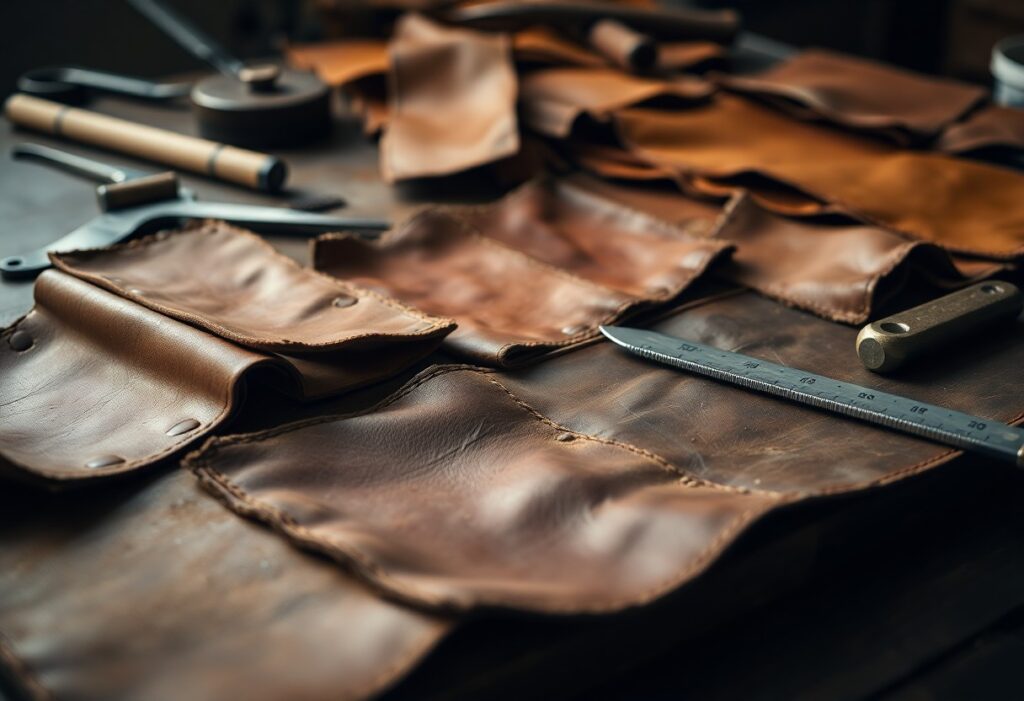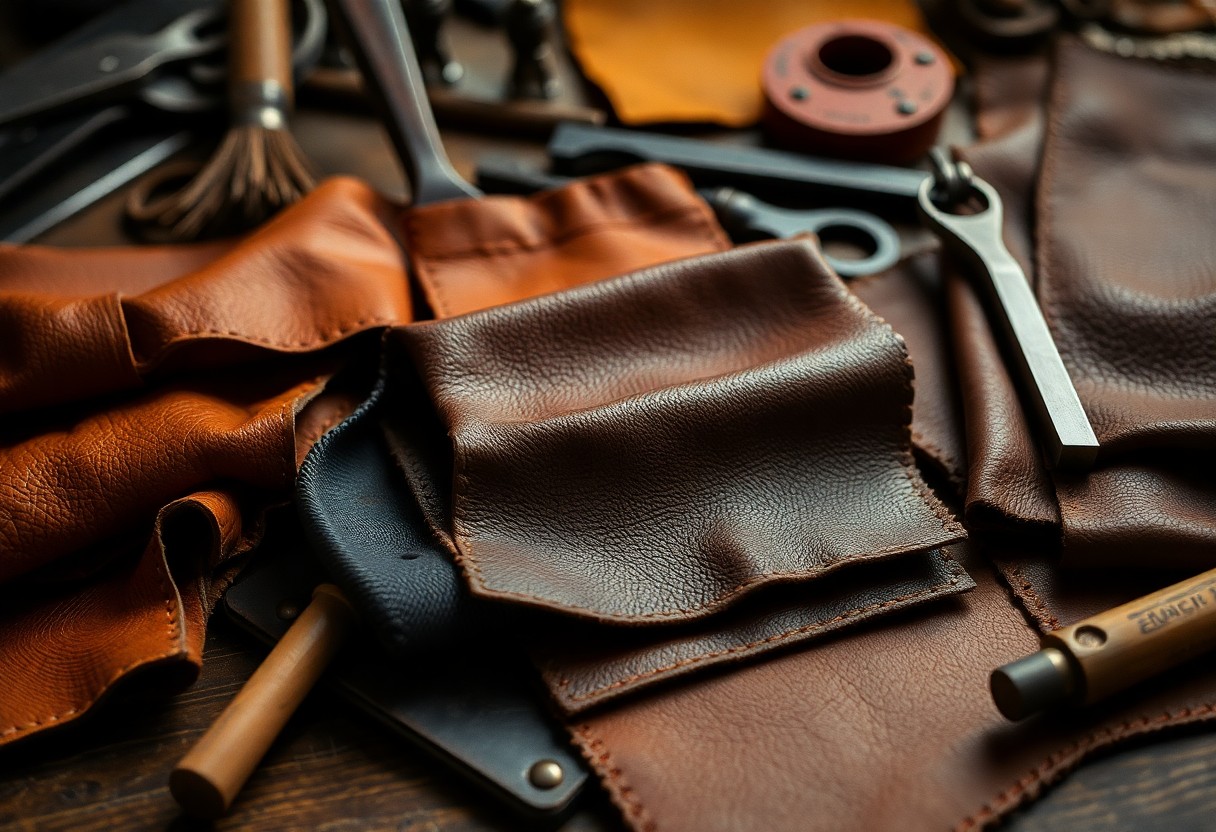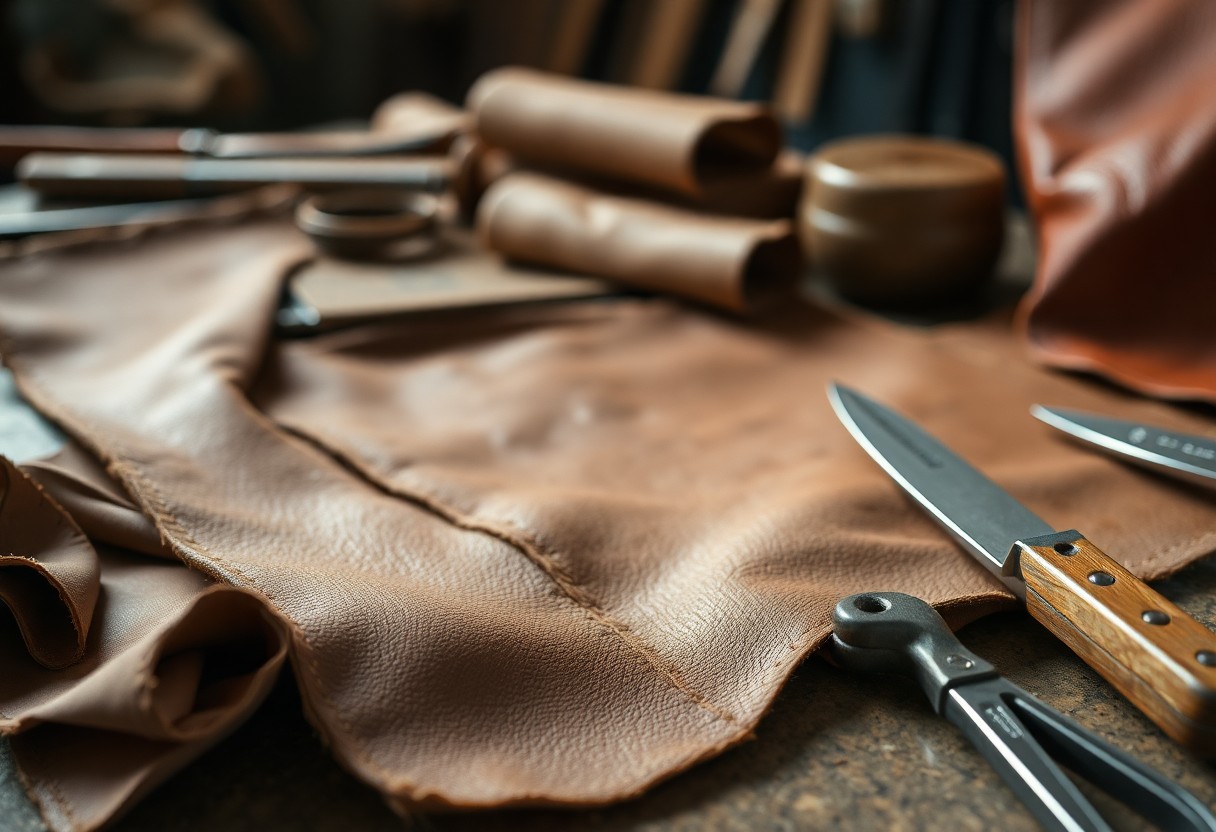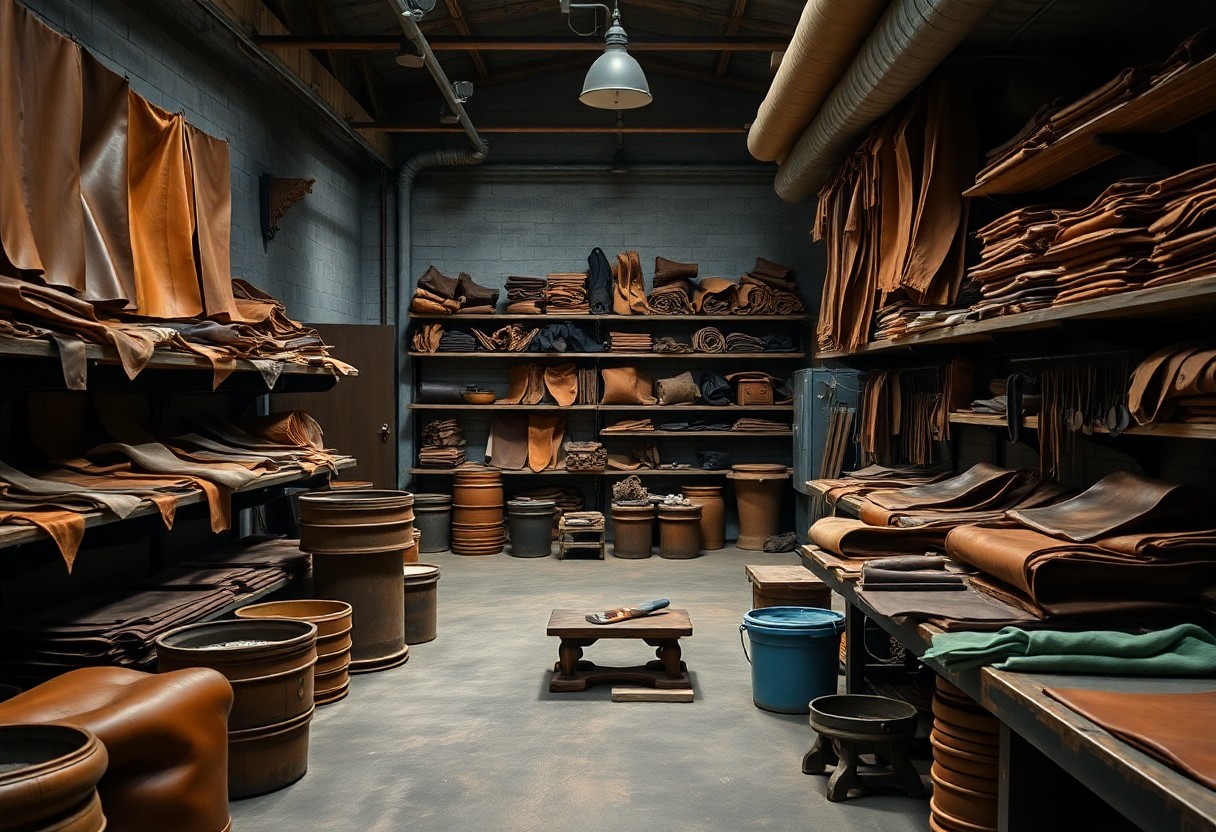
The journey of leather tanning has evolved remarkably over the years, leading to a sophisticated and intricate process that greatly influences the overall quality of leather products. Different tanning methods impart distinct characteristics to the leather, affecting vital attributes such as durability, water resistance, texture, and color retention. This multifaceted process begins with raw hides and progresses through several essential stages, which include chrome tanning, vegetable tanning, and chrome-free methods. Each method uniquely impacts the leather’s properties, influencing its usability and care requirements. By gaining a deeper understanding of these processes, you can make informed decisions regarding leather quality while also considering the environmental implications, as certain methods are notably more sustainable than others.
Discover the Different Leather Tanning Techniques for Quality Outcomes
Producing high-quality leather involves several tanning methods that transform raw hides into usable leather products. The primary techniques include chrome tanning, vegetable tanning, and chrome-free tanning. This detailed guide is designed to help you understand the intricacies of each process, empowering you to select the one that best aligns with your leather requirements.
| Method | Characteristics |
| Chrome Tanning | Fast, water-resistant, 85% of global production |
| Vegetable Tanning | Natural, eco-friendly, 10% of production |
| Chrome-free Tanning | Environmental-friendly, 5% of production |
| Combination Tanning | Blends multiple methods for unique properties |
| Aldehyde Tanning | Specialized process for specific applications |
Unraveling the Chrome Tanning Method for High-Quality Leather
The chrome tanning process utilizes chromium (III) salts to create leather that is soft, flexible, and highly sought after for a variety of applications. This method yields leather that is not only water-resistant but also readily accepts dyes, making it a favored choice among manufacturers. The efficacy of chrome tanning is impressive, with a typical processing time of just 24-48 hours, which is crucial for meeting the demands of mass production.
Exploring the Timeless Tradition of Vegetable Tanning
Regarded as one of the oldest and most traditional methods, vegetable tanning harnesses natural tannins derived from tree bark and leaves. This technique is celebrated for its ability to produce leather that ages gracefully, developing a rich patina over time while remaining biodegradable. Different types of vegetable tanning, such as those using oak bark, chestnut, and mimosa extracts, contribute distinct characteristics to the final product. Expect this meticulous process to take around 4-6 weeks, resulting in leather that is typically firmer and exhibits a more structured quality compared to chrome-tanned leather.

A Thorough Examination of the Leather Tanning Process Stages
The transformation of raw hides into premium finished leather involves a systematic and carefully structured process. Below is a detailed overview of each key step and its vital role in achieving the desired leather quality.
Pre-Tanning Preparations Essential for Superior Quality
To ensure the best possible leather quality, raw hides undergo a series of meticulous preparation steps. This initial phase includes soaking the hides in clean water for 24-48 hours to remove salt and dirt, followed by a liming process that effectively eliminates hair and fat. Maintaining precise pH control during this crucial stage is essential to prevent any potential damage to the hides, ensuring that they are in prime condition for tanning.
Core Procedures in the Main Tanning Phase for Optimal Results
The pretanning phase involves deliming and pickling to prepare the hides for the main tanning agents. The most widely used method is chrome tanning, which utilizes chromium sulfate and can produce finished leather in as little as 24 hours. In contrast, vegetable tanning employs natural tannins, extending the process to approximately 20-60 days.
Another vital aspect of the tanning process is temperature control. Chrome tanning typically occurs at temperatures between 35-40°C, while vegetable tanning is conducted at lower temperatures of 20-25°C. Consistent monitoring of pH levels is crucial to prevent damage to the leather and ensure optimal absorption of tanning agents throughout the process.
Advanced Leather Treatment Techniques to Enhance Quality
Numerous techniques are available to elevate the properties of your leather. From surface finishing to deep penetration treatments, each method serves a specific purpose. Utilizing the right treatment can extend your leather’s lifespan by up to 50%, significantly enhancing its resistance to water, heat, and wear over time.
Diving into Various Surface Treatments for Protection
Surface treatments applied to leather may include waxing, buffing, and protective coatings. These techniques can enhance water resistance by up to 70%, allowing you to choose between a shiny or matte finish based on your aesthetic preference. Moreover, surface treatments are crucial in safeguarding leather against UV damage and everyday wear and tear, prolonging its beauty and functionality.
Understanding Dyeing Techniques for Enhanced Color and Longevity
Your leather can absorb various types of dyes at different depths. For instance, aniline dyeing penetrates deeply into the leather, resulting in a rich, uniform color, while surface dyeing provides a more controlled application of color. The dyeing method you select directly influences both the appearance and durability of the leather.
Furthermore, the dyeing technique you choose plays a significant role in determining the final characteristics of the leather. Drum dyeing can achieve up to 95% color penetration, ensuring vibrant hues, while spray dyeing allows for enhanced precision in color control. It’s noteworthy that natural dyes are more eco-friendly but may fade approximately 20% faster than their chemical counterparts, making it essential to balance aesthetics with functionality.

Understanding Key Quality Factors in Leather Processing
The overall quality of leather is significantly influenced by a multitude of interconnected factors throughout the processing chain. Comprehending these elements is vital for achieving superior results in both leather selection and maintenance. The choice of tanning method, the quality of the hides, and the processing parameters all play crucial roles in determining the final properties of the leather. By mastering these factors, you will be better positioned to evaluate leather quality according to your specific needs and preferences.
Choosing Raw Materials for Optimal Leather Quality
When selecting raw materials, it’s imperative to focus on the condition of the hides and the animal source. The caliber of your raw materials has a direct impact on the properties of the finished leather. Ideally, the best hides come from healthy animals and are characterized by minimal surface defects. Pay attention to thickness consistency and ensure there is no parasitic damage present. It’s crucial to select materials based on their intended end-use, as different applications require specific hide characteristics to achieve the desired results.
Significance of Processing Parameters for Quality Control
There is a clear correlation between processing controls and the overall quality of leather. Maintaining strict oversight over pH levels, temperature, and chemical concentrations is essential for consistently high-quality outcomes. The duration of the tanning process typically spans from 24 to 48 hours, with temperature controls maintained between 35-40°C. Your meticulous attention to these parameters ensures consistent leather quality throughout the production process.
This level of careful management should extend to every stage of processing. It’s vital to monitor moisture content (ideally between 45-55%), maintain appropriate drum speed during tanning, and ensure accurate chemical dosing. Additionally, the drying conditions must be closely regulated to prevent any damage to the leather. A thorough focus on these parameters culminates in the production of higher-quality finished leather that meets industry standards.
Expert Strategies for Achieving Superior Leather Treatment Results
Not all leather treatment processes yield the same level of quality; thus, it’s essential to focus on temperature control, chemical balance, and timing precision throughout the tanning process to achieve the best results.
- Regularly monitor pH levels
- Maintain consistent temperature
- Adhere to exact chemical ratios
- Document each step meticulously
Being aware of the signs of proper tanning can enable you to achieve high-quality finished leather that stands the test of time.
Techniques for Optimizing Leather Tanning Processes
To achieve optimal results, it is crucial to maintain control over your tanning environment. Keep your workspace at temperatures of 20-25°C and maintain humidity levels between 45-55%. Ensure that your chemical solutions are fresh and accurately measured to avoid inconsistencies. Regular maintenance of your equipment is also essential for ensuring consistent results throughout your leather treatment processes.
Upholding Quality Standards in Leather Storage and Care
The quality of leather is significantly influenced by your storage conditions and handling procedures. Store your leather in a dry, cool area that is away from direct sunlight to preserve its integrity and extend its lifespan. Regularly check the moisture content and rotate your stock every 30 days to prevent deterioration.
Monitoring the process is critical for maintaining quality standards. Your routine checks should encompass pH testing, physical inspections, and moisture content analysis. Keep detailed records of all findings and make adjustments to your procedures based on these results. Consistent quality control enables you to identify potential issues before they negatively impact your final product, ensuring a consistently high-quality output.

Analyzing the Benefits and Drawbacks of Different Tanning Techniques
To fully comprehend leather tanning, it’s essential to evaluate the various methods based on their respective advantages and disadvantages. Below is a detailed comparison of the primary tanning techniques:
| Pros | Cons |
|---|---|
| Chrome tanning: Quick processing, cost-efficient | Chrome tanning: Environmental concerns, potential disposal issues |
| Vegetable tanning: Eco-friendly, natural process | Vegetable tanning: Lengthy process, requires more water |
| Chrome-free tanning: Environmentally safe, high quality | Chrome-free tanning: Complex process, potential for higher costs |
| Combination tanning: Versatile properties | Combination tanning: Challenges in quality control |
Economic Considerations of Leather Tanning Choices
Choices related to leather tanning methods can significantly impact your production costs. Chrome tanning boasts 85% cost efficiency compared to vegetable tanning, while chrome-free methods often elevate expenses by 20-30%.
How Tanning Decisions Affect Leather Quality
The quality of even the finest leather can be severely compromised by poor tanning decisions. Your chosen tanning method directly influences key attributes such as durability, water resistance, and texture.
For example, leather processed through chrome tanning demonstrates superior water resistance and flexibility, while leather tanned using vegetable techniques generally exhibits better aging characteristics and develops a unique patina over time.
Key Insights on Leather Tanning and Treatment Processes
From the insights shared, it’s clear that different leather tanning and treatment methods profoundly influence the quality and characteristics of your leather. Choosing between chrome, chrome-free, or vegetable tanning will significantly impact your leather’s durability, texture, and environmental implications. Additionally, the dyeing technique you choose—whether aniline or crust—will affect your leather’s color depth and aging process. Finally, the type of finishing applied—be it full grain, corrected grain, or top-coated—establishes the standards for appearance, breathability, and maintenance requirements. Acquiring a comprehensive understanding of these processes equips you to make well-informed decisions regarding your leather purchases and care practices.
Your Leather Tanning Questions Answered: FAQs
Q: What are the main differences between chrome tanning and vegetable tanning?
A: Chrome tanning employs chromium salts, resulting in soft, water-resistant leather that is processed quickly and economically. This method accounts for 85% of global leather production. In contrast, vegetable tanning utilizes natural tannins derived from tree bark and leaves, requiring a longer processing time and producing leather that develops character with age. While vegetable-tanned leather is more environmentally friendly in terms of disposal, it is more susceptible to staining compared to chrome-tanned options.
Q: How does aniline dyeing influence leather quality and appearance?
A: Aniline dyeing involves immersing leather in dye baths that penetrate deeply into the material. This technique results in a uniform color throughout the leather, offering excellent color retention. Contemporary aniline-dyed leather is often dyed partially rather than completely, maintaining a lighter middle layer. This method enhances the leather’s stability while ensuring good color depth on the surface, contributing to its overall quality.
Q: What distinguishes full grain leather from corrected grain leather?
A: Full grain leather retains its natural surface without sanding or artificial overlay, showcasing natural pores, the strongest fiber structure, and the ability to be restored when scuffed. Conversely, corrected grain leather undergoes sanding and is covered with a plastic layer, making it easier to clean and maintain. However, corrected grain leather may lack breathability and could crack over time without means for repair.
The Article Guide to leather tanning and treatment methods processes types and their impact on quality appeared first on My Shoes Finder
The Article Leather Tanning: Methods, Processes, and Quality Impact Guide Was Found On https://limitsofstrategy.com




Comments are closed